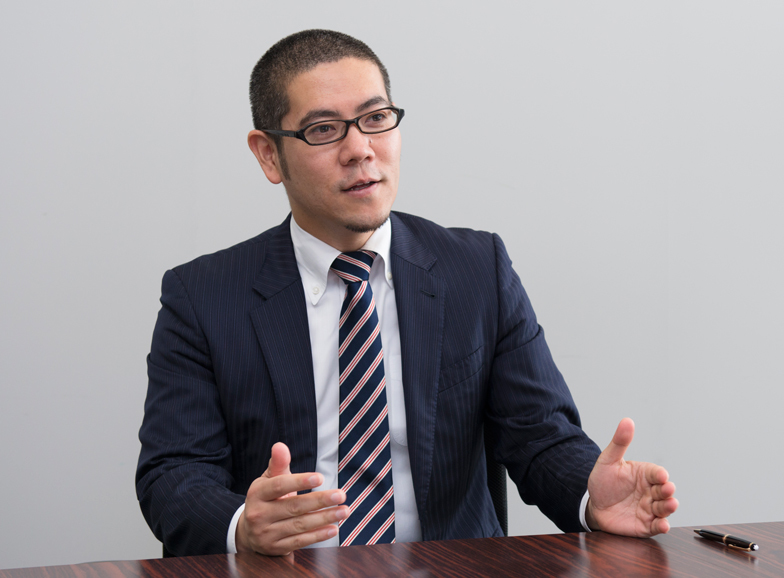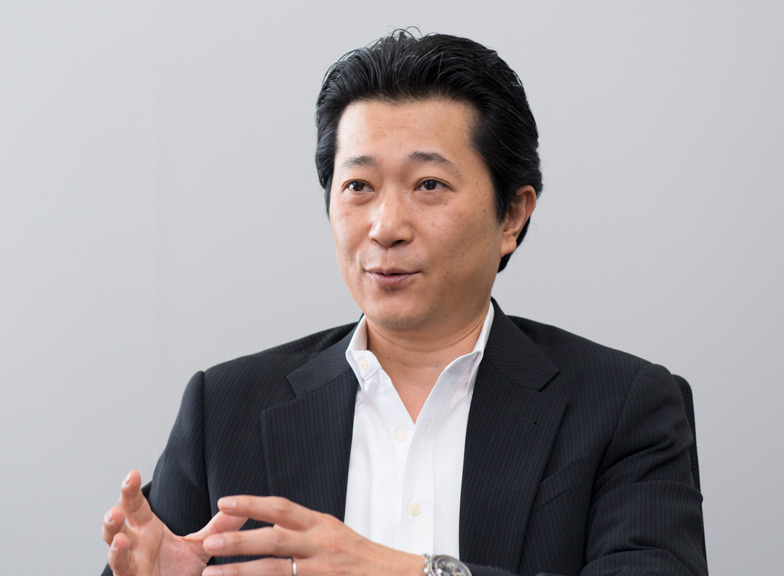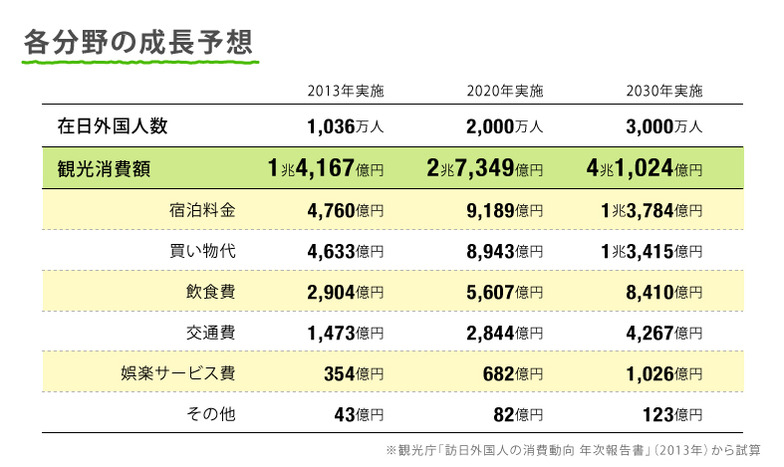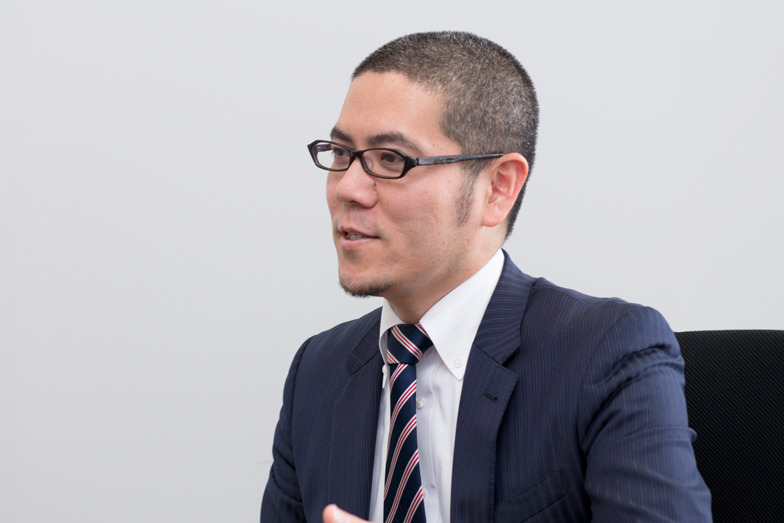Note: This website was automatically translated, so some terms or nuances may not be completely accurate.
The Right Approach to Booming Inbound Tourism (Part 1) ~ Yamagokoro's Keisuke Murayama × Dentsu Inc. Kuniyuki Takahashi ~

Keisuke Murayama
Yamato spirit

Kuniyuki Takahashi
Dentsu Inc.
The inbound business sector continues to heat up. This series features experts and Dentsu Inc.'s "Inbound Business Team" exploring the current landscape from multiple angles and introducing hints for solutions.
For the first installment, we spoke with Keisuke Murayama, an inbound business specialist who has operated the B2B site "Yamagokoro.jp," dedicated to inbound tourism since 2007. Mr. Murayama, who actively lectures nationwide, appears in domestic and international media, and provides consulting services, and whose book "Visitor-to-Japan Tourism Business" is currently selling well, shared his insights on the current state and challenges of inbound tourism today, along with strategies for success.
Before "What" to Do, Understand "Who" is Coming
Takahashi: The inbound-related market is becoming increasingly remarkable. Growth has been overwhelming since the start of this year. It's featured daily in the media, such as "Inbound Consumption" becoming the top-ranked product in the Nikkei MJ Hit Product Rankings.
Murayama: According to data released by the Japan National Tourism Organization, we've reached 5.89 million visitors over the past four months, a 43% increase compared to the same period last year. If this trend continues, we could potentially exceed 15 million visitors in a single year. This is a tremendous impact.
Takahashi: We're also seeing a daily increase in consultations from clients. Among them, we hear a lot of voices saying, "We know we have to do something for inbound tourism, but we just don't know where to start!"
Murayama: While many businesses are seeing sales growth without taking action, I sense that at this stage, they're starting to want to do something more strategically. The first thing they should do is clarify their target audience. Often, before figuring out "what" to do, they don't even know "who" is coming. As foreign tourists keep increasing, lumping them all together doesn't provide insight. Nationalities vary, and even within China, coastal and inland regions differ. Looking at income levels, cruise ship visitors can come for around ¥50,000, making the demographic broad. We need to clarify who is actually coming now, what the future outlook is, where to target, and what concept to promote. By defining these points, we can provide high-quality experiences and further drive repeat visits.

Takahashi: I'm often asked how to effectively convey our message. For instance, Chinese visitors tend to decide their souvenir list before arriving in Japan. How can we make them aware of our products and encourage them to specifically seek them out?
Murayama: It's a difficult problem, but meticulous marketing is crucial. China has 1.3 billion people, and some of its cities alone have larger populations than Japan. How do you capture your target within such a market? For example, Lotte Department Store in South Korea has bases in each Chinese province for gathering and disseminating information. They research what's selling and what products are in demand in each area before planning promotions and other initiatives. In Japan, even the government tourism bureau is lagging behind, focusing mainly on Shanghai and Beijing on the mainland, with plans to expand to Guangzhou at best. On top of that, the speed of information dissemination is critically important. As mentioned earlier, whether a product makes it onto the local souvenir list can decide its fate. While specific thermos bottles might sell well, what sells and what doesn't often comes down to a razor-thin margin – whether information was disseminated first, or whether influential people spread the word. No matter how good a product is, if it comes out later, it's hard to compete. Of course, understanding Chinese preferences in naming and packaging is also vital, so we need to look at it holistically.
Takahashi: At Dentsu Inc., we also research the travel routes and information channels of inbound tourists by country. We can now gather quite detailed information, and cross-referencing it is crucial. To communicate efficiently, we also build networks with local PR agencies and influential bloggers, study media trends, and work together as a team to sharpen our approach.
Murayama: Sometimes communication through an intermediary works well. For example, compared to Chinese tourists, Taiwanese visitors have more repeat customers. They understand subtle differences, compare options, and share in-depth information. Chinese tourists then use that as a reference for their own decisions.
Takahashi: The fact that it's "Made in Japan" and that it's a product popular in Japan are also important for inbound demand, right?
Murayama: Yes, that's a strong overall trend. However, there are exceptions. For example, Issey Miyake's "BAO BAO" is currently selling extremely well, but it's particularly popular with Thai and Chinese consumers more than Japanese. The reason is that celebrities started using it, sparking a trend. Also, according to data from a department store, visitors from Thailand, Taiwan, Hong Kong, and South Korea prioritize whether something is Made in Japan. But for Chinese shoppers, the top 10 brands they purchase are all luxury brands, regardless of Japanese origin. As needs diversify, it's becoming harder to generalize.
Takahashi: Precisely because it's becoming more segmented, meticulous marketing is crucial.

You can't offer hospitality without knowing your guests.
Murayama: Right now, as we approach 2020, there's a lively debate about what exactly Japanese "hospitality" means. In Tokyo and tourist areas, restaurants and lodging facilities suddenly saw a surge in foreign tourists, leading to complaints from Japanese customers asking, "Has this place become a foreigner-only establishment?" I feel Japan is currently in a major transitional phase. As foreign visitors will undoubtedly continue growing toward 2020, debating how to balance them with Japanese customers will surely lead to deadlock. A "universal" stance—providing the same standard service regardless of the customer's nationality—becomes crucial.
I spoke with the CEO of a certain luxury Italian brand who remarked that Japan today resembles Italy twenty years ago. Back then, Japanese tourists were on shopping sprees, and store staff focused solely on Japanese and Asian customers, ignoring local patrons. When the boom ended, they found themselves shunned by the locals. He expressed concern that this same scenario is unfolding in Japan now.
Without genuine support from the local community, business will never stabilize or even survive. While Chinese tourists may be spending heavily now, it's crucial to consistently provide the same level of service to Japanese and other international customers alike.
Takahashi: Even so, I keep wondering what exactly constitutes a kind of de facto standard for Japanese service when dealing with various tourists like Chinese, Americans, Russians, and others.

Murayama: What Japanese people consider good hospitality isn't necessarily good hospitality for them, right? As hosts, we tend to push Japanese things, but first, we need to show genuine interest and understanding of their culture and lifestyle to truly know each other. On top of that, it's absolutely crucial to clearly communicate Japan's rules. Foreigners tend to be very clear in their opinions—what's good is good, what's bad is bad. On review sites like TripAdvisor, Japanese people often give middle-of-the-road ratings on a five-point scale, while foreigners are more black-and-white. First, take a step forward to understand the other person and clearly communicate Japan's rules. If they understand, they'll say so; if they dislike it, they'll say so. That opens up further communication.
Takahashi: You can't offer true hospitality without knowing the other person, right? But when dealing with foreigners, there's often a sense of distance, making it easy to proceed with things left ambiguous.
Murayama: In reality, it's common to find people responsible for inbound tourism who've never even been to China, or staff at commercial facilities who've never had a single conversation with customers. Relying solely on data often leads to theoretical approaches. Actually experiencing foreigners firsthand makes you realize, "Ah, so that's what that was about," and opens your eyes to a different world.
Takahashi: Frequent turnover among inbound managers also prevents know-how from accumulating. In large corporations, it feels like many change every two or three years.
Murayama: That's absolutely true. Inbound tourism requires regional collaboration, which one company alone can't achieve. It demands cooperation among players like travel agencies, lodging facilities, local governments, and media—making personal networks crucial. It's truly a waste when these connections vanish and start from zero due to personnel transfers. Maintaining network continuity and accumulating know-how is a challenge for all of Japan.
Know-how is built through mutual growth and competition across multiple companies. When results are achieved, they should be shared as success stories. That cycle is crucial. Many companies face similar challenges, so instead of competing for market share, the key is thinking about collaborating to expand the market together.

Regional areas hold business opportunities for the world's 7 billion people
Takahashi: Dentsu Inc. also has bases from Hokkaido in the north to Okinawa in the south. Our inbound strategy treats these bases not as isolated points but as a network. By sharing information across the group, we strive to standardize knowledge and skills, produce necessary collaborations with regions and companies, and promote domestic consumption and regional customer flow.
Murayama: That's incredibly important. We mentioned the importance of regional initiatives. Essentially, foreign tourists don't just want to visit one specific facility; they come to experience the entire area. Coordinating various regional players to build an inbound business framework—that producer-type talent might be the most needed in Japan's inbound market right now. If Dentsu Inc., with its regional offices, can take on that producer role locally, aligning interests and effectively building these frameworks, I firmly believe inbound tourism will absolutely flourish even more.
Takahashi: Japan is a treasure trove of content. As an aside, I was born and raised in Tokyo, so when I first visited the Shonai region of Yamagata, where my wife's family is from, I was truly moved to see places like the Dewa Sanzan mountains, revered as sacred mountains where gods dwell. The country offers distinct seasonal changes, and at the same time of year, you find completely different charms from north to south. I genuinely believe there's no country more fascinating than this.
Murayama: There's an interesting experiment result. At the ITF International Travel Fair in Taiwan, which draws about 300,000 visitors, we set up a booth with a map of Japan. We asked people to place blue stickers on places they'd visited and yellow stickers on places they wanted to visit. The result? While many blue stickers were placed, the yellow stickers were spread out evenly across all 47 prefectures.
Takahashi: That's quite moving in a way.
Murayama: From Tohoku, of course, to the Hokuriku region, which might be seen as less well-known. The more repeat visitors we get, the more certain it becomes that they'll want to go to places they haven't been before and experience Japan more deeply. It's crucial to convey the charm of winter to those who visited in summer, or show foreign tourists the depth of Japan, and figure out how to create that input that leads to their next visit.
Takahashi: Do you have knowledge about the places marked with yellow stickers?
Murayama: Yes. I was there too and thought it must be totally random (laughs), but I checked and found I could rattle off place names and actually know quite a lot. In Taiwan, they know more than Japanese people, thanks to the internet, TV, guidebooks, and especially information from friends since many are repeat visitors. Many yellow stickers were placed on small islands in the Seto Inland Sea. When you ask Japanese people, they usually say, "Isn't that Shodoshima?" It's Naoshima. Benesse built an art museum there, and it's famous because it's often featured in overseas media, but Japanese people often don't know about it.
Takahashi: Slowly but surely, we're seeing successful cases of regional promotion from an inbound perspective.
Murayama: Yes. For example, Tanabe City in Wakayama Prefecture is doing it very well. It has the World Heritage Kumano Kodo pilgrimage routes and targeted inbound tourists, especially independent travelers, positioning itself as a "sustainable tourist destination open to the world." They established the "Tanabe City Kumano Tourism Bureau" and invited Brad Tru, a Canadian, to become a city employee. Centered around him, they've developed tour routes and other offerings from a foreigner's perspective. Furthermore, Tanabe City went so far as to create its own travel agency. It's a DMC (Destination Management Company), which organizes and sells the destination itself, and its annual sales have reached over 100 million yen.
Takahashi: While attention often focuses solely on Chinese tourists' spending sprees, this also connects to regional revitalization, doesn't it?
Murayama: Also, while not strictly tourism, a successful example of regional collaboration is the shopping campaign jointly run by the Keyaki Street Shopping District in Harajuku and Omotesando. Fukuoka City has a similar initiative.
Takahashi: "Hida Satoyama Cycling" is also getting a lot of attention.
Murayama: That's incredibly popular too. They've developed cycling routes where you can enjoy the authentic scenery and interact with locals. The cycling tour tickets, costing around 7,000 yen, are almost always fully booked by foreign tourists on weekdays. Visitors are coming from Australia, the US, Singapore, and recently, Southeast Asia is growing too. The key is that it requires almost no hardware investment beyond the bicycles. This really highlights how crucial it is to develop content from a foreigner's perspective.
For foreigners, Tokyo offers cutting-edge technology and robotics, but venturing just a bit into the suburbs reveals untouched countryside—that contrast is incredibly appealing. A business that wouldn't work targeting Japan's 130 million people can resonate with people among the world's 7 billion. I believe regional areas can expand their business opportunities by directly communicating with the world.

Takahashi: I once worked with a prefectural tourism office. They had an impressive prefectural museum, one of the top three largest in the world. It houses an enormous collection of specimens, with the history of every exhibit documented. Scholars from around the world gather there for study sessions. When I asked why they didn't promote it more, they modestly replied that there's no bullet train access and the infrastructure is lacking.
Murayama: That prioritization is a waste. Lack of infrastructure isn't a valid excuse. First, communicate. Once visitors come and a flow is established, infrastructure will follow. If something is good, people who want to go will figure out how to get there.
There's often debate about whether attracting visitors or preparing facilities comes first, but starting with attracting visitors is crucial. Many places think they must first set up transportation, Wi-Fi, duty-free services, and other amenities before they can begin, and end up doing nothing even after a year. I was once consulted by the headquarters of a major retail chain about how to boost inbound tourism nationwide. The most effective way to ignite branches is getting customers to come. Once they arrive, the switch flips. They start thinking desperately, respond thoroughly, and if it becomes too much, they ask headquarters for help. Successful places start with attracting customers first, gradually accelerating and adapting their response.
(Continued in Part 2)
Was this article helpful?
Newsletter registration is here
We select and publish important news every day
For inquiries about this article
Author

Keisuke Murayama
Yamato spirit
President and CEO
Graduated from the University of Wisconsin-Madison. Launched the B2B website "Yamato Gokoro.JP" specializing in inbound tourism in 2007, providing information dissemination, education/training, and consulting services for hotels, retailers, restaurants, and local governments. As an expert in inbound business, has appeared frequently on various domestic and international media outlets, including World Business Satellite and NHK World. Recently, he has been actively providing information on inbound trends to financial institutions, investors, and business executives. He also focuses on promoting inbound business through lectures nationwide. He concurrently serves as a director for numerous inbound-related organizations. Selected as one of "100 Japanese People Winning in Asia" by AERA. In addition to a column series on Nikkei Business Online, he is the author of "Visitor Tourism Business in Japan: A Guide to Conquering the Boiling Inbound Market" (Shoeisha).

Kuniyuki Takahashi
Dentsu Inc.
Media Services / Newspaper Division
Planning Director
Joined Dentsu Inc. in 1994. Served as a sales executive handling cosmetics, finance, major fashion brands, and automobile manufacturers. In the Incubation Division, proposed Dentsu Inc.'s first CRM service (obtained a business model patent) and spearheaded its implementation. In the Promotion Division, focused on integrating media and promotion, handling numerous collaborative projects. Currently serves as project leader for a cross-functional team developing solutions aimed at creating Dentsu Inc.-specific inbound tourism business.